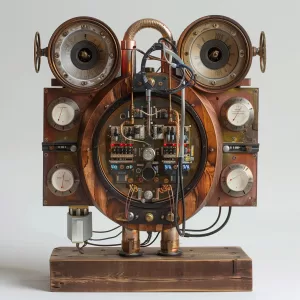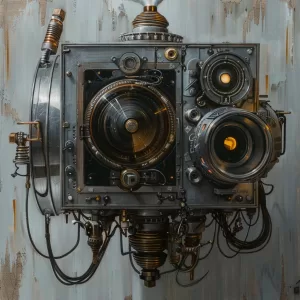
Resonator vs Muffler: Understanding the Key Differences
February 28 2024  990
990
Inquiry
Global electronic component supplier AMPHEO PTY LTD: Rich inventory for one-stop shopping. Inquire easily, and receive fast, customized solutions and quotes.
QUICK RFQ
ADD TO RFQ LIST
In this blog, we will delve deeper and understand the key differences between resonators and mufflers.
What is a Resonator?

What Does a Resonator Do?
Similar to a noise filter, a resonator reduces certain high-pitched sounds or bothersome droning frequencies. It accomplishes this by amplifying the undesirable frequency through resonance and then using that amplification to produce damaging interference and cancel it out. This lowers the overall sound level without appreciably changing the volume.Types of Resonators
There are several types of resonators, each with slightly different characteristics:- Helmholtz resonators: These may resonate at a certain frequency because they have a neck and an opening in the chamber.
- Expansion chambers: These modify the sound waves by varying the volume inside the chamber.
- Reactive absorption resonators: For wider frequency targeting, reactive absorption resonators combine components of expansion chambers and Helmholtz.
How Resonators Work?
- Energy Input: The resonator gets energy input in the form of electrical current, mechanical vibrations, or sound waves.
- Natural Frequency: The resonator's size, shape, and material composition all contribute to its unique natural frequency.
- Resonance: Resonance is the result of matching the inherent frequency of the resonator with the supplied energy. As a result, the resonator's vibrations are amplified, which causes:
- Increased output frequency amplitude at that particular frequency.
- Other frequencies are dampened, or have their amplitude decreased or abolished.
What’s Muffler?

What Does the Muffler Do?
- Dampening sound waves: The interior construction of the muffler employs several chambers, baffles, and perforated tubes to break up and attenuate the sound waves that are carried by the exhaust gas. These components:
- Reflect sound waves so that, in a process known as destructive interference, they cancel each other out.
- Take in sound energy and transform it into heat.
- Controlling backpressure: Although the muffler's primary function is to reduce noise, it also helps to regulate backpressure in the exhaust system. The resistance exhaust gasses face as they leave the engine is known as back pressure. Fuel efficiency and engine performance might be impacted by excessive back pressure. The muffler's design strikes a compromise between minimizing noise and preserving ideal backpressure.
How Muffler Works?
Mufflers use a combination of destructive interference and absorption to reduce the noise level of engine exhaust. Here's a deeper look at how they work:- Destructive Interference:
- Divide the exhaust gas flow into several chambers to provide the sound waves with distinct routes.
- By making the sound waves bounce off baffles or pass through perforated tubes, you can make them travel farther.
- Absorption:
Video related to Resonator vs Muffler
Why Resonator is Used?
A resonator's main function is to cut out certain undesirable frequencies that a muffler might not be able to adequately handle. This is especially useful for cars that have been modified and could make annoying drone noises while the engine runs at a certain speed.Why Muffler is Used?
A muffler's main function is to lessen exhaust noise overall so that it complies with legal and environmental requirements. For the driver and other passengers, it guarantees a quieter driving experience.Resonators VS Mufflers
While both resonators and mufflers contribute to managing exhaust noise, they have distinct functionalities:- Function: Mufflers lower overall volume, whereas resonators target particular frequencies.
- Location: In the exhaust system, resonators are usually positioned upstream of the muffler.
- Impact on Sound: Mufflers control overall loudness, whilst resonators handle droning noises.
- Cost: In general, resonators are less expensive than mufflers.
Where are Resonators Located?
In an exhaust system, resonators are usually placed upstream of the muffler and downstream of the exhaust manifold. The vehicle and intended outcome will determine the precise positioning. Sometimes, a larger spectrum of undesirable frequencies can be targeted by combining a few resonators.Where is Muffler Located?
Usually found under the car, the muffler is situated at the back of the exhaust system. As the last step in reducing noise before exhaust leaves the car, it collects exhaust gas from the resonator, if one is installed.Conclusion
It's essential to comprehend the differences between mufflers and resonators to maintain a safe and responsible exhaust system. Mufflers limit the total loudness, guaranteeing compliance with laws and making driving quieter. Resonators provide focused control over particular undesired frequencies. Finding the best course of action should involve striking a balance between one's preferences, statutory obligations, and environmental responsibilities.Populer Posts
